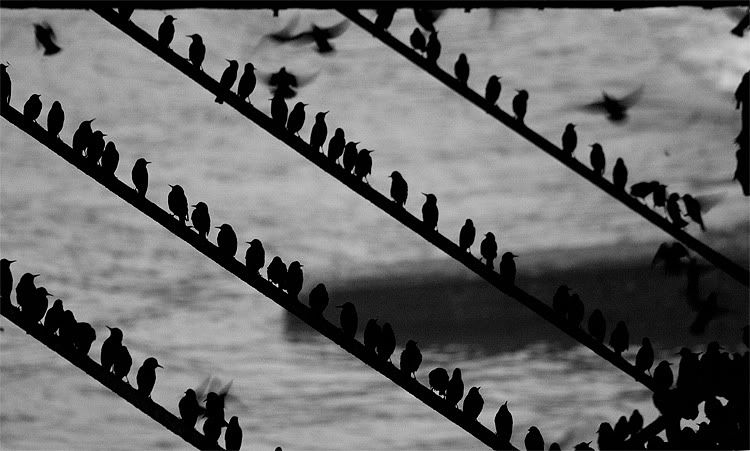Darren Turner
XProPhotographer
If your scared on birds do not visit Aberyswyth at this time of year.......i never seen so many birds in one place ever...........!!
[video=youtube;nfUtVkvSXg0]http://www.youtube.com/watch?v=nfUtVkvSXg0[/video]
filmed badly on Canon Eos 7D, need to learn how to do this more............but gives you an idea..............lol

[video=youtube;nfUtVkvSXg0]http://www.youtube.com/watch?v=nfUtVkvSXg0[/video]
filmed badly on Canon Eos 7D, need to learn how to do this more............but gives you an idea..............lol

The sight of thousands of starlings roosting under Aberystwyth pier has long been one of Wales' most striking wildlife spectacles.
That tradition looks set to continue despite a startling 50% drop in the British starling population since 1992.
And that's because the 10,000 or so Aberystwyth birds wheeling and swooping in unison come from Northern Europe.
But their British cousins are on a list of Welsh birds most at risk with the decline blamed on food shortages.
They're like clockwork - you know at a certain time in the evening the sky will start to turn black and it's mesmerizing watching the flock grow and grow
Caroline deCarle, RSPB
It is thought a lack of food during the breeding season between late March and early June could be the cause.
Changes in pasture management which make food hard to find could also be a factor, according to Caroline deCarle of the RSPB, based at Ynys-hir reserve, near Machynlleth.
"Starlings are not very popular with people because every spring they come back from Africa and go into people's gardens and they seem to bully other birds whilst looking for food," said Ms deCarle.
"But people must remember that the starlings will have travelled a long way and are desperate to re-fuel."
Starling
Starlings roost together to protect themselves from predators
In stark contrast to the plight of the British-based bird, the Northern European starlings that migrate southward to Britain for the winter seem to be thriving.
"The numbers of birds that roost under Aberystwyth pier, for example, seem to have remained constant over the years, " said Ms deCarle.
The wildlife exhibition, known as a murmuration, can be seen on at many sites and nature reserves across Wales.
According to Ms deCarle many of the autumn roosts are already forming well, and more and more will flock together as the weeks go on.
Mesmerizing
Early evening, just before dusk, is the best time to see them as they choose their communal night-time shelter.
Ms deCarle said: "The starlings join forces for safety in numbers in case of predators and to keep warm at night.
"They also exchange information, such as good feeding areas and often feed miles away from where they roost and return each evening.
"In many cases they are like clockwork - you know that at certain time in the evening the sky will start to turn black and its mesmerizing watching the flock grow and grow."
